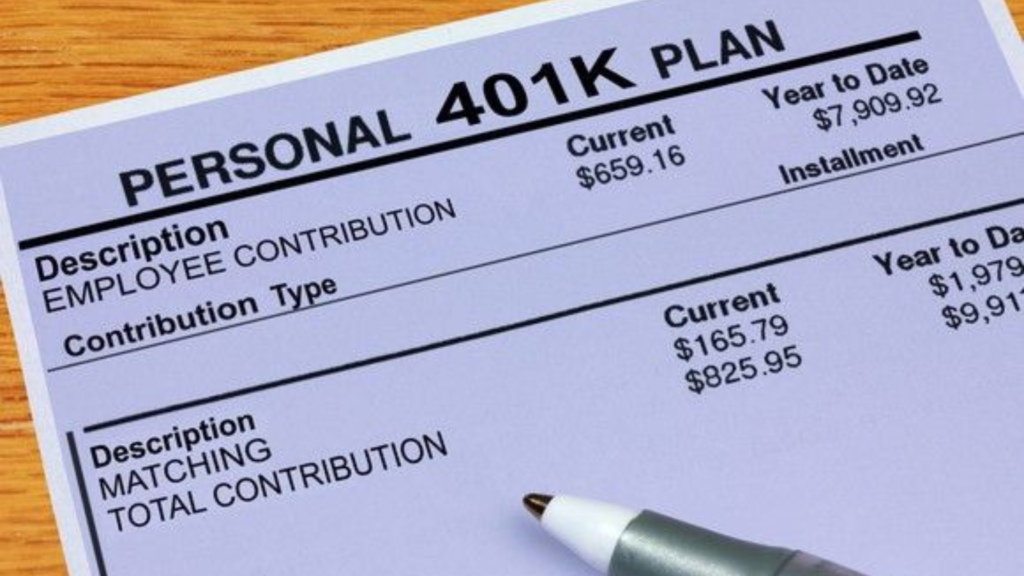It is sad to read the ceaseless stream of reports claiming that Americans stand no chance of having enough money saved for retirement. But take a deep breath. According to two new and shocking studies, the future may not be as bad for many Americans as some pundits have claimed.

One study is from the Transamerica Center for Retirement Studies, and the other is from Vanguard. These are a few of the major findings:
The Surge in Retirement Savings
Americans are saving more than ever for retirement, even in the face of rising inflation. According to Vanguard’s “How America Saves 2024” research, more than 40% of employees raised their 401(k) contributions in 2023.

David Stinnett from Vanguard stressed the beneficial effects of these plans on investing and saving patterns. The study shows that retirement plans are successfully promoting better saving habits. And this is based on data from 1,500 plans and close to 5 million participants.
Automatic Enrollment in Retirement
The implementation of automatic enrollment in retirement programs has yielded significant rewards. Ten years ago, only one-third of plans had automatic employee enrollment. Today, six out of ten plans do. This change helps remove behavioral barriers that keep workers from contributing to their 401(k) plans.

Furthermore, deferral rates have gone up; the majority of plans now begin with a 4% contribution rate or above for workers, which is almost twice as many as it was ten years ago, the report states. These options for automated savings are truly profitable.
The Average Total Savings Rate
According to Vanguard data, the average total savings rate—including employee and employer contributions—is at an all-time high of 11.7%. And after examining retirement saving patterns for more than 20 years, that is the best result they have seen.

Stinnett stated, “We recommend saving 12%–15% of your earnings for retirement.” Additionally, 2023 witnessed a 19% increase in Vanguard account balances because of the improving stock market. The average participant’s account balance by the end of 2023 was $134,128; the median amount was $35,286—a 29% increase from the end of 2022!
Employer-Sponsored Pension Plans
For younger workers like Millennials and Gen Z who are starting their retirement savings earlier, auto-enrollment has been a game-changer. But it’s crucial to keep in mind that not everybody is protected.

Approximately 57 million US private sector employees, or nearly half of the workforce, lack access to employer-sponsored pension plans like 401(k). Their retirement savings are completely voluntary, making it more difficult for them.
Contributions Plan
Your income can strongly impact your ability to save. 58% of workers making between $30,000 and $49,999 made contributions to their employer’s plan in 2023, while 95% of those making over $150,000 did the same.

58% of employees under 25 and over 80% of those between the ages of 35 and 64 participated. The length of employment is also important; 73% of workers with less than two years on the job and nearly 90% of those with four or more years did so.
Target-Date Funds
How’s this for a remarkable leap? With 70% of participants investing their whole account in a single fund, the percentage of participants using target-date funds has increased to 83% from 62% in 2022 and more than doubled from 2023. Target-date funds represent a “set it and forget it” approach to investing, with plans focused on retirement dates such as 2035 or 2045.

The fund progressively switches investments from stocks to safer options like bonds and cash as you get older. In addition to getting ongoing rebalancing, participants who invest exclusively in target-date funds are also much less likely to trade than any other investor group.
Target-Date Investing
Stinnett emphasized a change: before managed account advice and target-date funds, young employees frequently had insufficient equity allocations, missing out on prospects for advancement. Extreme portfolios, with either 100% or no equity, were formerly popular;

However, because of managed account advice and target-date investing, only 3% of participants now own them. This change guarantees more age- and balance-appropriate investing options, which will help employees better match their retirement savings with their long-term financial goals.
The Share of Vanguard 401k
Even though Vanguard plan members’ account balances increased dramatically in 2023, there was also an evident spike in hardship withdrawals. A record-breaking 4% of 401(k) participants took early withdrawals from their funds to pay for unforeseen expenses.

Furthermore, from 2022 to 2023, the proportion of workers taking out loans from savings rose by 12%. The fact that these withdrawals, which often ranged from $1,000 to $4,999, were frequently used for medical bills or to stop home foreclosure or eviction, serves as a stark reminder of the financial hardships brought on by inflation and growing expenditures.
Early Withdrawals from Retirement Funds
Early withdrawals from your retirement account could greatly impact your finances. Withdrawals on previously untaxed monies are subject to income tax and decrease your retirement savings.

In addition, unless you meet IRS exclusions, you might be subject to an additional 10% tax penalty if you are under 59½ years old. These exclusions can offer some assistance in certain situations and cover costs like medical bills, schooling subsidies, or up to $10,000 for first-time home purchases.
Retirement Savings Participation
The phrase “super savers” describes workers who fund a 401(k) or comparable retirement plan with more than 10% of their salaries. Transamerica Center for Retirement Studies data shows that 44% of workers fall into this category, with 15% contributing between 11% and 15% and 29% paying more than 15% of their yearly salary.

There is a generational divide in this trend: 53% of Gen Z, 44% of millennials, 40% of Gen X, and 44% of baby boomers. These figures demonstrate a notable rise in retirement savings participation across all age categories when compared to 2019.
Early Retirement Plan for Financial Security
With 71% of Generation Z enrolling in employer-sponsored plans at age 20, they have embraced retirement savings earlier than prior generations. Baby boomers started at age 35, Gen X at 30, and millennials at 25.

Catherine Collinson stresses the significance of skill development and health upkeep, even though being a super saver is essential for a comfortable retirement. These considerations go beyond just making contributions to retirement plans; they also help people work longer, save more money, and ensure financial security.
